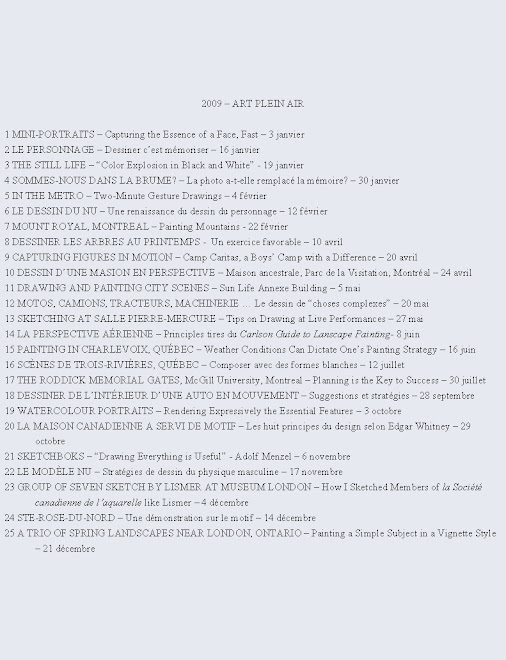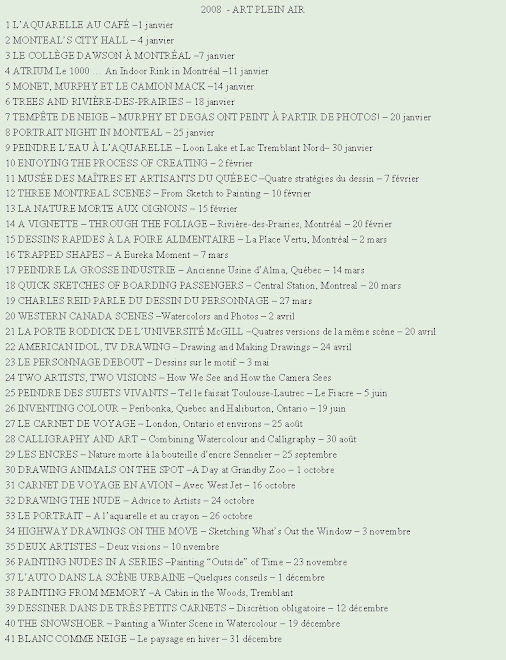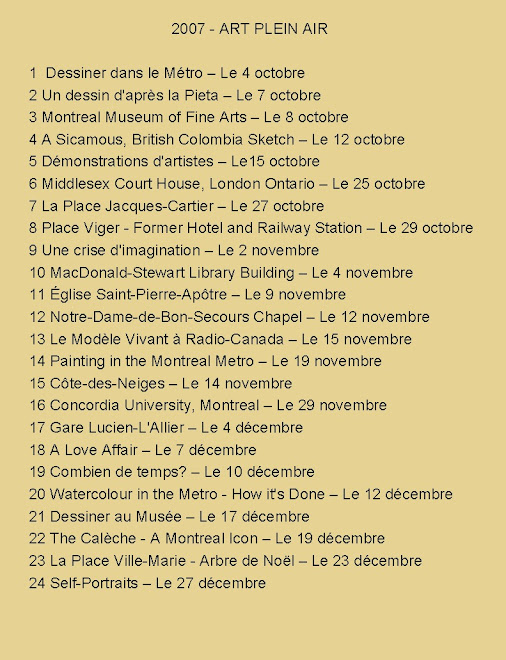A “different” drawing venue
I am always looking for new and varied subject material from which to draw. Dr. Sketchy is a life drawing event. I have posted some of the sketches my artist friend Jocelyne and I produced at the session we attended January 23rd at Maineline Theatre, 3997 St.Laurent Boulevard in Montreal. Abbie Normal was the model.
How Dr Sketchy originated
Dr. Sketchy's Anti-Art School is both a burlesque cabaret and life drawing event originating in Williamsburg, Brooklyn at the Lucky Cat. Dr. Sketchy's was founded in New York City in 2005, by illustrator and former artist's model Molly Crabapple and illustrator A.V. Phibes. Phibes later left to attend to her design studio.
Dr Sketchy is now in 40 cities
In spring 2006, Dr. Sketchy's expanded into an international franchise. As of September 2007, Dr. Sketchy's branches exist in 40 cities around the world. Branches vary in their conservatism, nudity levels and the skill of their artists.
Dr Sketchy sessions about one a month
The next Dr Sketch will take place March 6th at the Maineline Theatre between 2pm and 5pm. The cost is 10$. For more information go to the link here.
Why We Draw – Quotes from Peter Steinhart’s book The Undressed Art
This easy read entertaining book discusses the reasons why artists, especially figurative artists interested in life drawing of the figure, draw. Here is a sampling of quotes from his book which generally ring true.
• The ability to measure and the ability to see negative space are the greatest assets in drawing. (Eleanor Dickinson, dean of figurative art in the San Francisco Bay Area.)
• We draw to assemble more complicated details than we can assemble in memory alone.
• We draw to make sense of our own feelings.
• To draw representationally, one must increasingly evade the grasp that language tends to place on the mind, must, in a sense, replace knowing with seeing.
• Without instruction we are likely to go on drawing as children draw, depicting what we know rather than what we see.
• Drawing at least requires the ability to separate a figure from its ground or setting and the abilities to detect shape, forms, sizes and orientation.
• A six-inch drawing is easier than a larger drawing because it will be less detailed and because it lies entirely within one’s field of vision.
• You can depict things from memory, but the more you rely on what you recall, the more inaccuracy you’ll have.
• Video studies of art students show them looking half the time at the model, half the time at the drawing.
• An artist draws and draws and draws, seeking to expose himself or herself to as many views of the object as possible so as to amass a brain record from which to draw combinations that suit a new drawing’s need. One uses these memories when drawing quickly.
• Because drawing simplifies what you see, you have to learn what is important and what can be left out.
• One draws especially to learn. You learn and you learn and you learn.
• When you are drawing well, you are seeing something for the first time.
• You draw as if you have to draw, much as a long-distance runner runs or a mountain climber climbs, because without frequent resort to that endorphin-induced euphoria, one does not feel fully alive.
Hoping these words send you and me out the door more often with pencil and paper! Happy sketching!
Raynald Murphy sca
















Aucun commentaire:
Enregistrer un commentaire